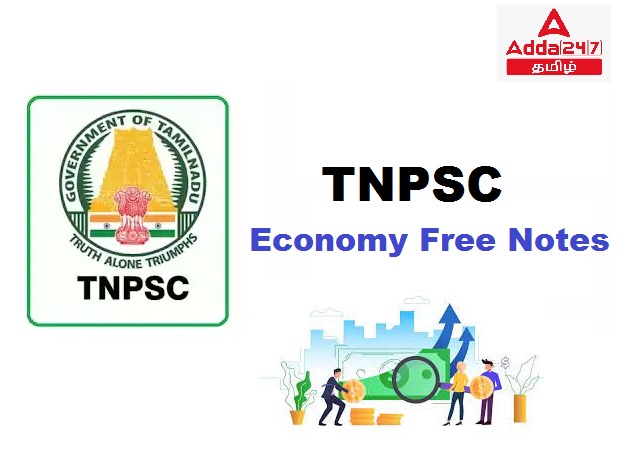இந்தக் கட்டுரையில், TNPSC குரூப் 1, குரூப் 2, குரூப் 2A, குரூப் 4 மாநிலப் போட்டித் தேர்வுகளான TNUSRB, TRB, TET, TNEB போன்றவற்றுக்கான முறைகள் இலவசக் குறிப்புகளைப் பெறுவீர்கள்.தேர்வுக்கு தயாராவோர் இங்குள்ள பாடக்குறிப்புகளை படித்து பயன்பெற வாழ்த்துகிறோம்.
Population Policy
India was the first developing country to adopt a population policy and to launch a
nationwide family planning programme in 1952.
The main objective of the population policy is to ensure that there is a reasonable gap
between the fall of death and birth rates.
Population policy refers to the efforts made by any Government to control and change the
population structure.
National Population Policy 2000
The National Population Policy (NPP) 2000 has the immediate objective of addressing the
unmet needs of contraception, health infrastructure, health personnel, and integrating
service delivery for basic reproductive and child health care.
It also lays emphasis on the medium-term objective of bringing total fertility rates to
replacement level by 2010.
Total Fertility Rate of 2.1 is known as replacement level fertility.
The policy’s long-term objective is to stabilise population by 2045.
A National Commission on population presided over by the Prime Minister, Chief Ministers
of all States and other dignitaries as the members has been constituted to oversee and
review the policy implementation.
Similar to the National Commission, State Level Commissions presided over by the
respective State Chief Ministers have also been set up with the same objective of
ensuring implementation of the policies.
Measures to achieve a stable population
The National Population Policy has listed the following measures to achieve a stable
population by 2045.
Reduction of infant mortality rate (IMR) below 30 per 1,00,000 live births.
Reduction of maternal mortality rate (MMR) to below 100 per 1, 00,000 live births.
Universal immunization.
To achieve 80 percent deliveries in regular dispensaries, hospitals and medical institutions
with trained staff.
Access to information containing AIDS, prevention and control of communicable diseases.
Incentive to adopt two-child small family norm.
Strict enforcement of Child Marriage Restraint Act and Pre-Natal Diagnostic Techniques Act.
Raising the age of marriage of girls from 18 to 20.
A special reward for women who marry after 21.
The Action Plan of the programme includes the following:
Self-help groups at village Panchayat levels comprising mostly of housewives will interact
with health care workers and gram panchayats.
Elementary education to be made free and compulsory.
Registration of marriage, pregnancy to be made compulsory along with births and deaths.
The Government hopes to achieve the objective of population stabilisation by 2045.
Census 2011
The 15 th Census of India and the seventh Census of Independent India 2011 was started on
1 st April 2010
The estimated cost of the Census was 22 Billion Rupees. The motto of census 2011 was ‘Our
Census, Our future’.
Census 2011 is the 15 th Census of India since 1872.
Census 2011 was held in two phases:
House listing & Housing Census: (April to September 2010)
Population Enumeration (9 to 28 February 2011)
The population of the country as per the provisional figures of Census 2011 is 1210.19
million of which 623.7 million (51.54%) are males and 586.46 million (48.46%) are
females.
The major highlights of the Census 2011 (Provisional figures) are as under:
The population of India has increased by more than 181 million during the decade 2001-
2011.
Uttar Pradesh (199.5 million) is the most populous state in the country, followed by
Maharashtra with 112 million.
The percentage decadal growth rates of the six most populous States have declined during
2001-2011 compared to 1991-2001:
Five most Populous States of the Country
Uttar Pradesh 19,95,81,477
Maharashtra 11,23,72,972
Bihar 10,38,04,637
West Bengal 9,13,47,736
Andhra Pradesh 8,46,65,533
Highest Populous State – Uttar Pradesh
Five least Populous States of the Country
Lakshadweep 64,429
Daman & Diu 2,42,911
Dadra & Nagar Haveli 3,42,853
Andaman & Nicobar islands 3,79,944
Sikkim 6,07,688
Least Populous UT –Lakshadweep, Sikkim is the least populous state.
Density of Population (person per sq km)
Density of Population in India 382
Highest Density in State Delhi (11,297)
Lowest Density in State Arunachal Pradesh (17)
Sex Ratio (Females per 1000 Males)
Sex ratio in India 940
Child (0-6 years) sex ratio 914
Highest sex ratio in the state Kerala (1084)
Lowest sex ratio in UTs Daman & Diu (618)
Highest child (0-6) sex ratio in the state Mizoram (971)
Lowest child (0-6) sex ratio in the state Haryana (830)
Literacy Rate in India
Total Person Literacy Rate 74.04%
Males 82.14%
Females 65.46%
Highest Literacy rate in state Kerala – 93.91%
Lowest Literacy rate in state Bihar – 63.82%
Note:
This 2011 census has the highest sex ratio recorded since Census 1971.
Literacy rate has gone up from 64.83 per cent in 2001 to 74.04 per cent in 2011. It shows an
increase of 9.21 percentage points.
Uttar Pradesh (199.5 million) is the most populous State in the country – the population is
more than the population of Brazil.
**************************************************************************
| Adda247 TamilNadu Home page | Click here |
| Official Website=Adda247 | Click here |




